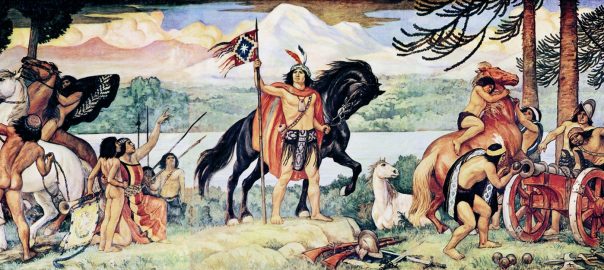The single most interesting development of 1561 CE was the renewed outbreak of an anti-colonial uprising in today’s Chile. But Suleiman the Magnificent was also getting on in years and his sons had been circling around for the succession… Anyway, read on!
-

18th century map of the Arauco First Chile. 1561 saw the outbreak of the Second Great Mapuche Rebellion in the Arauco region. The first had been in 1553, and had ended in a Mapuche victory which then got gradually (and violently) rolled back by the settler forces. The Mapuche seem to be a confederation of local indigenous groups, and for some reason (!) they did not like being enslaved by the conquistadores for the purposes of extraction of gold, silver, and other minerals from the conquistadors’ extremely dangerous mines. In the Araucio region they had a leader (toqui) called called Caupolicán who named as as his vice toqui Lautaro, a man who had served as an auxiliary to the Spanish cavalry. Lauturo’s experiences with the Spanish gave him many valuable insights. By the time the Mapuche chiefs had decided to rise again, in 1561, they knew how to work iron, use Spanish weapons (including firearms and cannon), and ride for the horses captured from their conquerors; they had also learned better strategies and tactics. Some years before 1561, however, both Caupolicán and Lauturo had been killed by the settler hordes. (Caupolicán was killed by impalement.) The 1561 uprising dragged on and did not end well for the Mapuche though they continued resisting and resisting for the next couple of centuries even as they got driven back far from the coast. In a complicated-looking act of historical appropriation, Lauturo even became lauded as a “national hero” by (settler-origined) Chileans… (The banner-image above, an early-20th century painting of Lauturo by Chilean painter Pedro Subercaseaux, is probably part of this phenomenon?)
-

Detail from a miniature of Suleiman & Bayezid And in the Ottoman Empire meanwhile, Suleiman the Magnificent had his agents murder Şehzade Bayezid, one of his two remaining sons. Echoes, obviously, of what had happened to Suleiman’s oldest son, Mustafa, back in 1553… After then, only Bayezid and his slightly older full brother Selim remained standing, and for the next six years they jockeyed for the succession– with some apparent continued goading from their dad. Each was supposed to be learning administrative skills by governing a province. English-WP tells us: “Bayezid was the governor of Kütahya and Selim was the governor of Manisa, two cities at almost equal distance from Istanbul (Constantinople). Suleiman was in his 60s, and the competition between the two brothers over the throne was evident. Suleiman scolded his sons and decided to change their places of duty. Bayezid was assigned to rule Amasya and Selim to Konya, both provinces being further from Constantinople but still equidistant. Selim was quick to obey and promptly moved to Konya, but to the dismay of his father, Bayezid obeyed only after much hesitation. Angered, Suleiman accused Bayezid of being a rebel and supported Selim against Bayezid. Selim, in collaboration with Sokollu Mehmet Pasha (the future grand vizier) and with additional help from his father’s army, defeated his brother in a civil war at Konya in May 1559.” Bayezid then fled to lands of the (generally anti-Ottoman) Safavids. Suleiman gave the Safavid emperor a reported payment of 400,000 gold coins to allow him to send someone to the Safavid capital of Qazvin to execute Bayezid. The agent killed Bayezid and his four sons by garrotting. This sounds like a very GW Bush-era War on Terror story!
- In other news, in 1561 the Spaniards moved their capital from Seville to Madrid, and the Ming Dynasty started producing breech-loading muskets.
